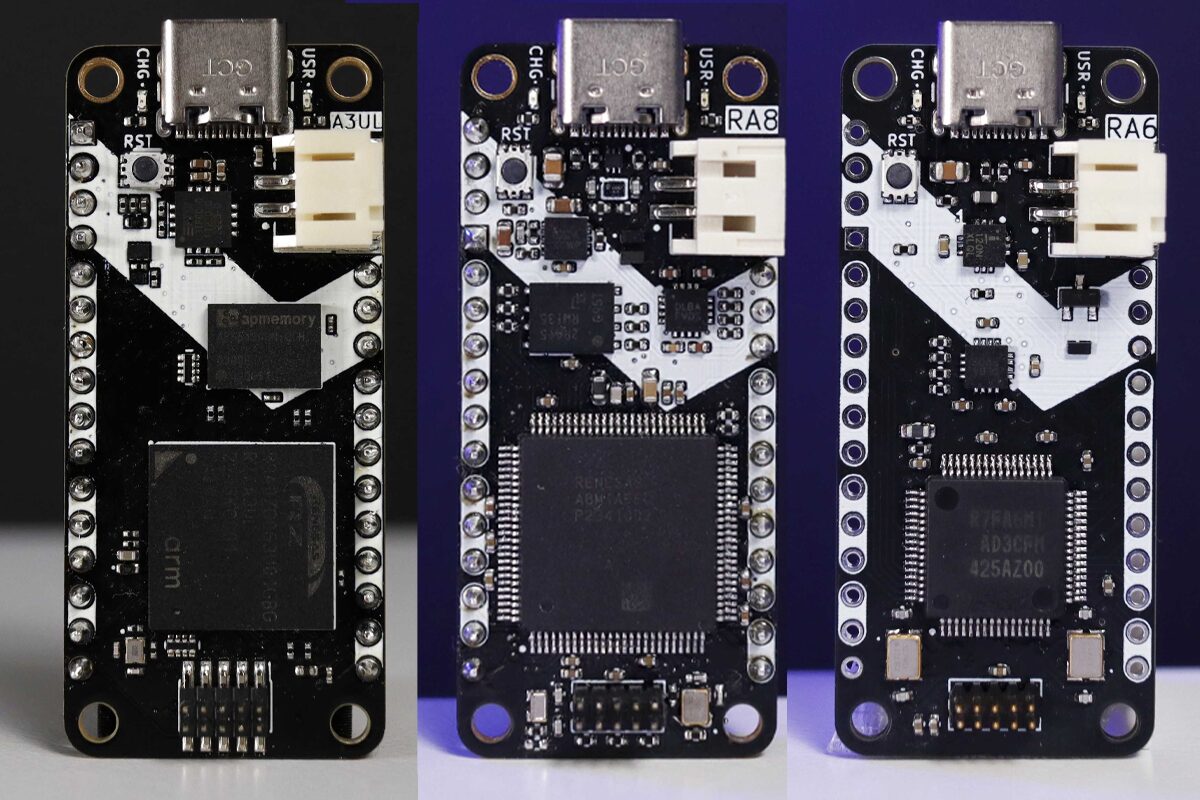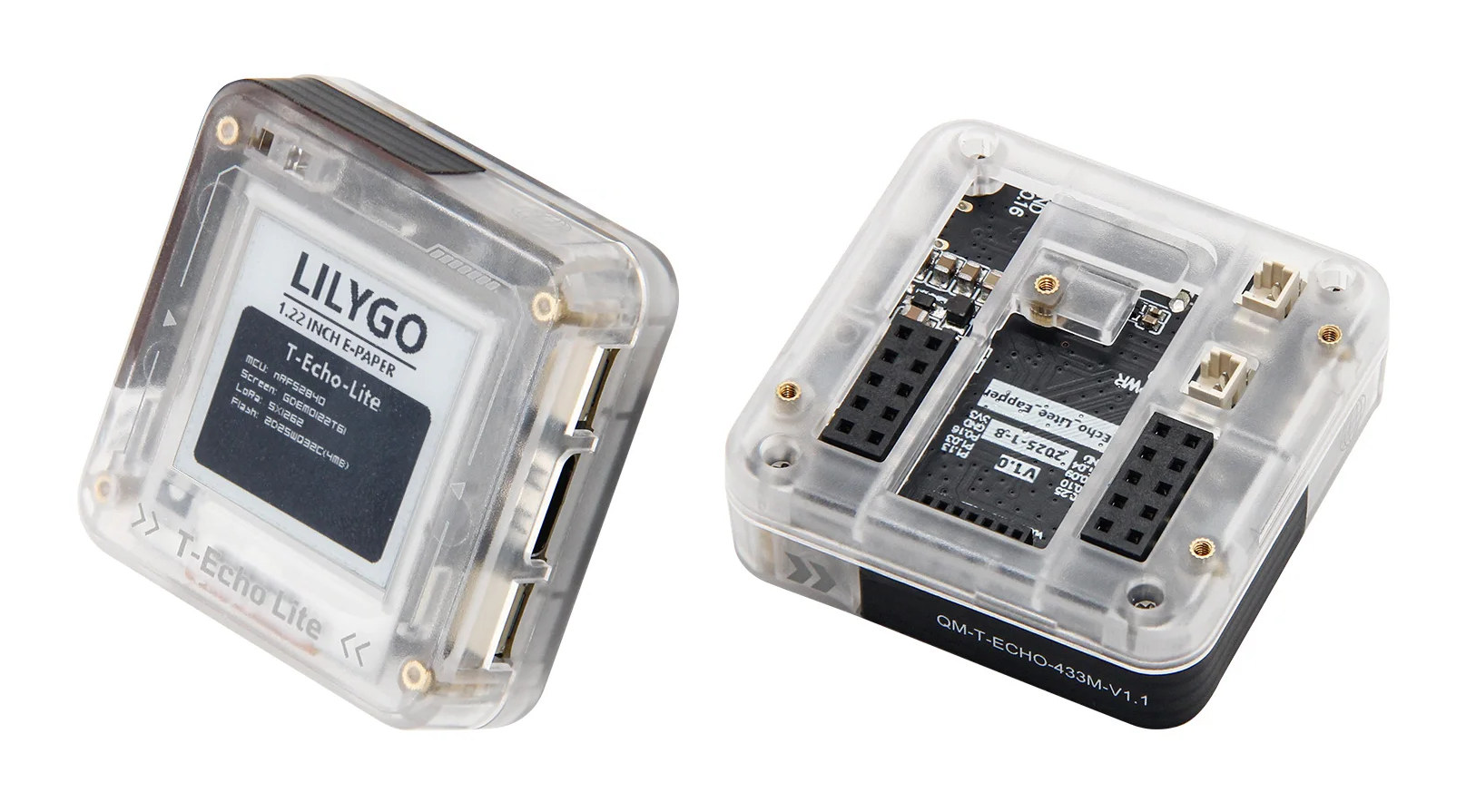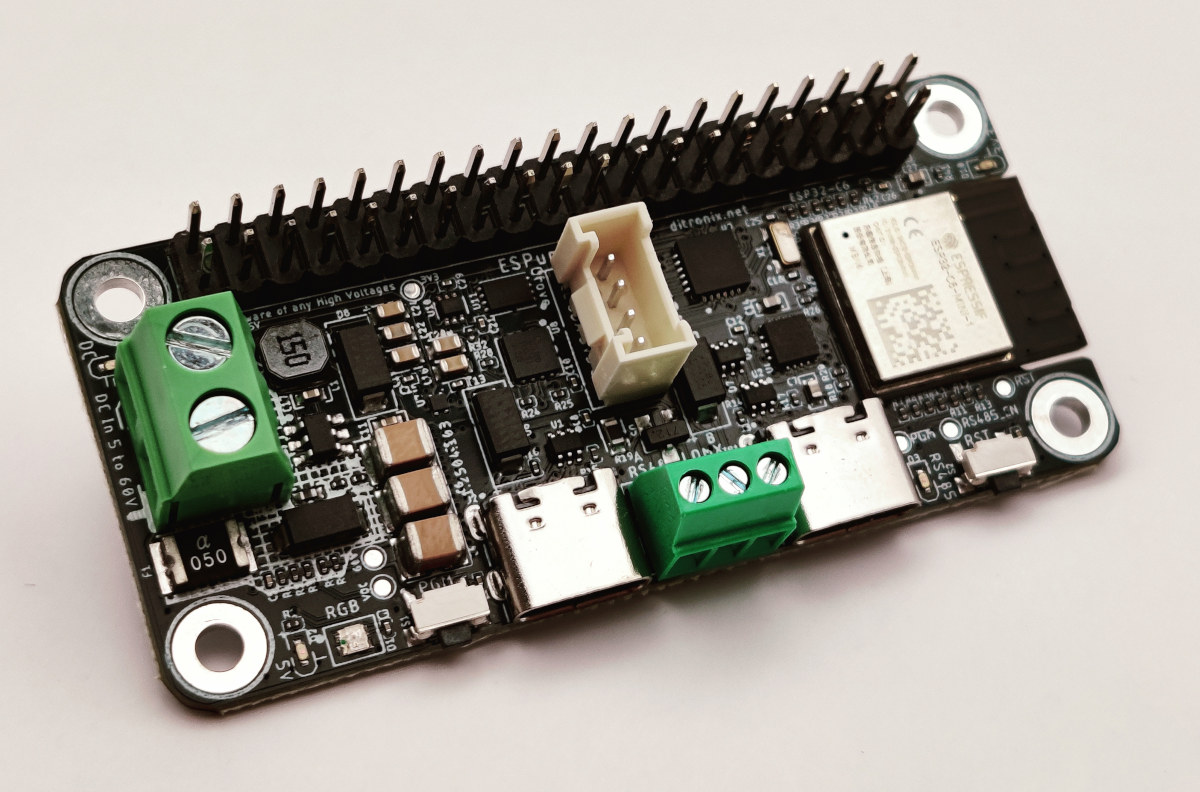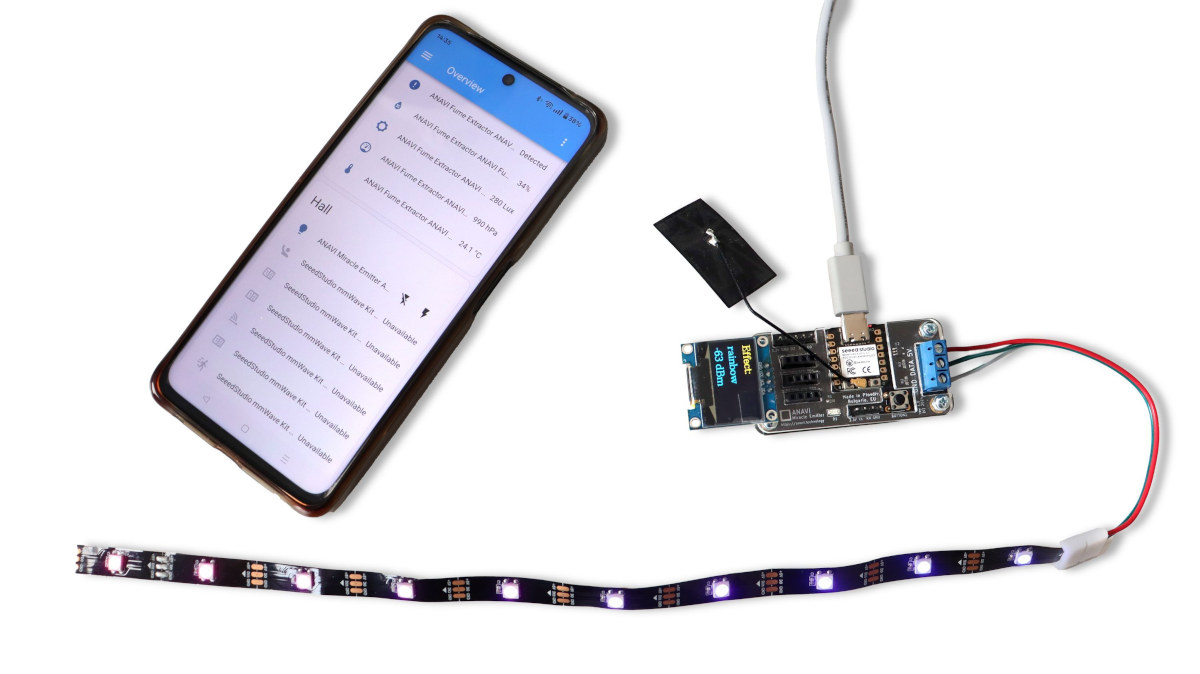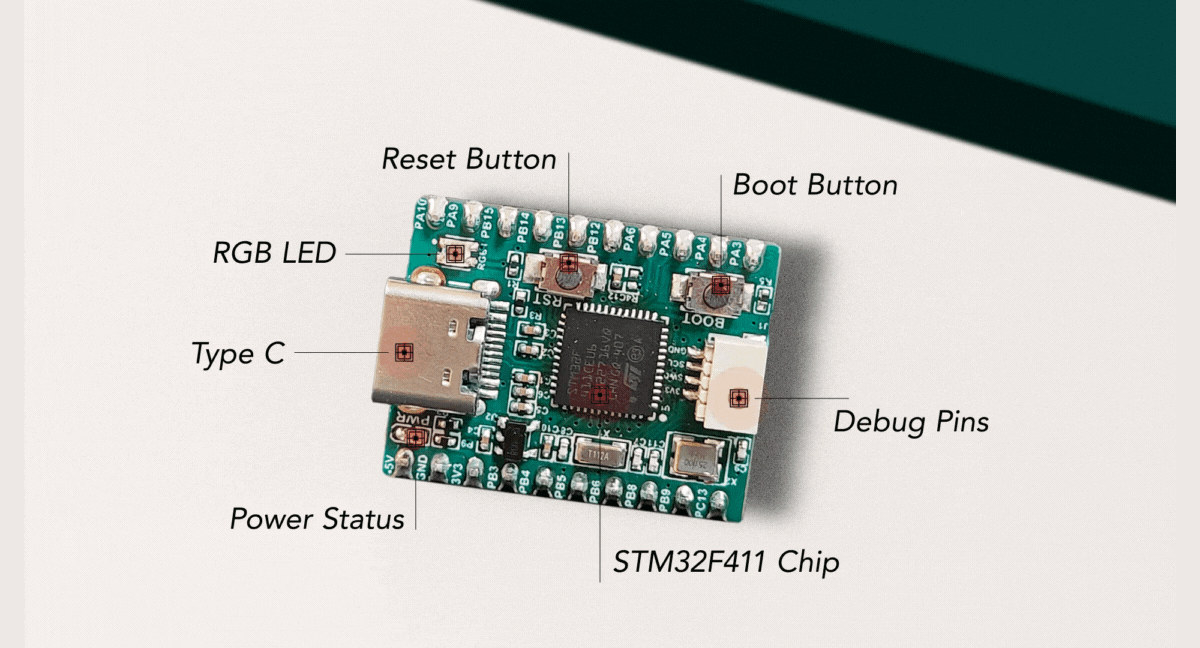Romanian company Zalmotek has recently introduced three new SoMs, the RA6M1, RA8M1, and RZ/A3UL, and a modular carrier board designed for embedded applications such as robotics, industrial control, and edge computing. There are a few things that I find interesting about this setup. The SoM comes in Adafruit Feather form factor and, as a result, supports various Adafruit FeatherWings. The modular carrier board supports the Dynamixel motor driver module, the Particle M-SoM breakout module, Ethernet, and CAN modules. The RA6M1 Feather SoM is powered by a Renesas RA6M1 Arm Cortex-M4 CPU at up to 120 MHz, with 512 KB flash and 96 KB SRAM while the RA8M1 Feather SoM features a Renesas RA8M1 64-bit Arm Cortex-M85 running at up to 360 MHz with 128 Mbit SPI flash, the RZ/A3UL Feather SoM is based on a Renesas RZ/A3UL 64-bit Arm Cortex-A55 CPU at up to 1 GHz, with 512 Mbit OctaFlash […]
Arduino cloud editor gets Claude-powered AI assistant trained on Arduino docs and libraries
Arduino recently announced that their Cloud Editor now includes an AI assistant based on Anthropic’s Claude large language model (LLM). The AI assistant is designed to make the coding experience smoother by providing intelligent, context-aware support directly within the Cloud Editor. This tool understands your specific board, libraries, and project setup, and generates code and fixes bugs. It also explains functions without requiring users to leave the development environment. Additionally, it reduces repetitive tasks by creating reliable boilerplate code and accelerates development with natural language prompt-based sketch generation, instant debugging, and detailed code explanations. These features make this tool useful for hobbyists, educators, and developers seeking to boost productivity and creativity in embedded projects. – Main features of Arduino’s AI assistant Platform – Integrated into Arduino Cloud Editor (app.arduino.cc) Compatibility – Exclusive to Arduino Cloud Editor (not available in the desktop IDE) AI Model – Powered by Anthropic Claude LLM […]
LILYGO T-Echo Lite – A 1.22-inch e-Paper display board with nRF52840 SoC, LoRa transceiver, GPS
LILYGO T-Echo Lite is a small Nordic Semi nRF52840 board with a 1.22-inch e-Paper display, a Semtech SX1262 LoRa transceiver, and an L76K GPS module, that’s especially suitable for Meshtastic off-grid messaging firmware. It looks like it could even serve as the base for a Meshtastic watch. The T-Echo Lite is a lightweight version of the earlier T-Echo that ships with a larger 1.54-inch e-paper display. Three Lite versions are available: T-Echo Lite Core – Castellated module with nRF52840, LoRa, power, and battery management T-Echo Lite Base – A breakout board for the Core module with battery and solar panel connectors, Qwiic connector, USB port, an interface for a 1.22-inch e-paper display, and an optional GPS expansion header T-Echo Lite Main Unit – Complete solution built around the Base version, a 1.22-inch e-paper display, and an acrylic enclosure. The L76K GPS module is still an option. T-Echo Lite specifications: LILYGO […]
ESPuno Pi Zero ESP32-C6 board takes up to 60V DC input, offers RS-485 interface (Crowdfunding)
ESPuno Pi Zero is a Raspberry Pi Zero-sized board based on an ESP32-C6-MINI-1 WiFI 6, BLE, and 802.15.4 wireless module and an SMPS that allows up to 60V DC input via a 2-pin terminal block. The board also features two USB-C ports, one connected to the ESP32-C6 and the other to a CH343P USB-to-serial chip, a 40-pin GPIO header, a Grove connector, a 3-pin terminal block for RS-485, DMX, Profibus, and a few buttons and LEDs. ESPuno Pi Zero specifications: ESP32-C6-MINI-1-N4 or ESP32-C6-MINI-1U-N4 SoC – Espressif Systems ESP32-C6 single-core 32-bit RISC-V clocked up to 160 MHz 320KB ROM, 512KB SRAM, low-power RISC-V core @ up to 20 MHz CPU Single-core 32-bit RISC-V clocked up to 160 MHz Low-power RISC-V core @ up to 20 MHz Memory/Storage – 320KB ROM, 512KB SRAM Wireless – 2.4 GHz WiFi 6, Bluetooth 5.0, and 802.15.4 radio (for Thread/Zigbee) Storage – 4MB flash Antenna ESP32-C6-MINI-1-N4 […]
Renesas RA0E2 low-cost, low-power Arm Cortex-M23 MCU operates in extended temperature range (-40°C to +125°C)
Renesas RA0E2 is a low-power, low-cost Arm Cortex-M23 microcontroller (MCU) Group part of the RA0 family introduced in 2024 that can operate in an extended temperature range (-40°C to +125°C) and offers a wide variety of peripheral functions and safety features. It follows the RA0E1 devices – the first member of the RA0 family – designed for consumer electronics, household appliances, power tools, industrial monitoring, and other applications, including battery-powered devices. The new RA0E2 MCUs offer both software and pin-to-pin compatibility (for 32-pin SKUs) with RA0E1 devices, but the new family adds more memory and storage with up to 16KB SRAM, 128KB code flash, and 2KB data flash. The RA0E2 also features more I/Os with 32-pin to 64-bit packages, instead of 16-pin to 32-pin packages. Renesas RA0E2 specifications: MCU Core – Arm Cortex-M23 Armv8-M Core up to 32MHz Memory and Storage 16KB SRAM Code Flash – Up to 128KB Data […]
ANAVI Miracle Emitter – A WiFi and BLE RGB LED controller compatible with Home Assistant, WLED firmware (Crowdfunding)
ANAVI Miracle Emitter is an open-source hardware ESP32-C3 WiFi and BLE controller designed to control 5V addressable RGB LED strips, which works with Home Assistant over MQTT and also supports the popular WLED firmware to easily control the LED strip through a web interface. It also features four I2C expansion headers for sensors and a small OLED display, a UART header, and a GPIO header. It’s an update to Leon ANAVI’s Miracle Controller introduced in 2019 with an ESP8266. A lot of things have changed since then, and it’s gotten easier than ever to control RGB LED strips using open-source software and firmware. ANAVI Miracle Emitter specifications: Wireless Module – Seeed Studio XIAO ESP32C3 Wireless MCU – Espressif Systems ESP32-C3 single-core RISC-V microcontroller @ 160 MHz with 400KB SRAM, 384KB ROM, 4MB flash, Wi-Fi 4 & Bluetooth LE 5.0 connectivity Antenna – External u.FL antenna USB – USB Type-C port […]
Raspberry Pi Pico-sized RP2350 CAN development board features a clone of the MCP2515 CAN Bus controller
Waveshare has recently launched RP2350-CAN, a Raspberry Pi RP2350-powered CAN development board with onboard XL2515 CAN Bus controller and a SIT65HVD230 CAN transceiver. The board supports the CAN V2.0B protocol at up to 1 Mbps, and the XL2515 chip appears to be a clone of the popular Microchip MCP2515 CAN controller. The board includes the same 26 multi-function GPIO pins and USB-C port as found on the Raspberry Pi Pico 2. Other features include a DC-DC buck-boost converter (MP28164), BOOT and RESET buttons, a user LED, a selectable 120Ω CAN termination resistor, and CAN screw terminals. The CAN Bus board targets automotive, industrial control, and robotics applications. Waveshare RP2350 CAN specifications: SoC – Raspberry Pi RP2350A CPU Dual-core Arm Cortex-M33 @ 150 MHz with Arm Trustzone, Secure boot OR Dual-core RISC-V Hazard3 @ 150 MHz Up to two cores can be used in any combination Memory – 520 KB on-chip SRAM […]
Xero MCU is a compact USB-C board based on STM32F411 microcontroller (Crowdfunding)
Xero MCU is a small STMicro STM32F411 Arm Cortex-M4F microcontroller board with a USB-C port, twenty through and castellated holes for GPIOs, a Debug connector, Reset and Boot buttons, and a few LEDs. The 100 MHz MCU embeds 512KB flash and 128KB SRAM, and the board is said to be designed for hobbyists, students, and professionals. For reference, the Xero MCU board features the same STM32F411CEU6 microcontroller found in the Black Bill board. However, it’s quite shorter at about half the size, and features castellated edges, making it suitable for soldering on a baseboard. Xero MCU specifications: Microcontroller – STMicro STM32F411CEU6 Arm Cortex-M4F MCU @ 100MHz with 512KB Flash, 128KB SRAM USB – 1x USB Type-C port for power and programming Expansion – 2x 20-pin through and castelled holes with up to 17x GPIO, I2C, 2x SPI, 2x UART, 4x ADC, 5V, 3.3V, and GND Debugging – 4-pin debug connector […]


